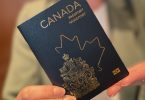Advertisements
Moving to Canada with your family involves careful planning and adherence to immigration procedures. Here’s a step-by-step guide to help you navigate the process:
Advertisements
Determine Your Eligibility
Determining your eligibility to move to Canada with your family depends on various factors, including your personal circumstances and the specific immigration pathways available. Here’s a breakdown of some common eligibility criteria for different immigration programs:
- Skilled Worker Programs: If you’re considering moving to Canada based on your skills and work experience, you may be eligible for one of Canada’s skilled worker programs, such as the Federal Skilled Worker Program (FSWP), the Canadian Experience Class (CEC), or the Federal Skilled Trades Program (FSTP). Eligibility criteria typically include factors such as:
- Education: You may need to have a certain level of education, usually assessed through educational credentials or diplomas.
- Work Experience: You may need to have a certain amount of work experience in a qualifying occupation.
- Language Proficiency: You may need to demonstrate proficiency in English or French through language tests such as the IELTS or CELPIP.
- Family Sponsorship: If you have a close family member who is a Canadian citizen or permanent resident, they may be able to sponsor you for immigration to Canada. Eligible sponsors include spouses, common-law partners, parents, grandparents, and dependent children. Criteria for sponsors and sponsored individuals vary depending on the specific relationship and sponsorship program.
- Provincial Nominee Programs (PNPs): Canada’s provinces and territories operate their own immigration programs known as PNPs. These programs allow provinces to nominate individuals who have the skills, education, and work experience needed to contribute to the local economy. Eligibility criteria for PNPs vary by province and may include factors such as occupation, work experience, language proficiency, and ties to the province.
- Investor and Entrepreneur Programs: Canada offers immigration programs for individuals who wish to invest in or start a business in Canada. These programs typically require a certain level of investment and may have specific eligibility criteria related to business experience, net worth, and the proposed business plan.
- Refugee and Humanitarian Programs: Canada has programs for refugees and individuals in need of humanitarian protection. Eligibility criteria for these programs are based on factors such as refugee status, persecution, and risk of harm in the home country.
To determine your eligibility for immigration to Canada with your family, it’s essential to research the specific requirements of the immigration programs that align with your circumstances. You can use the Government of Canada’s official website or consult with an immigration lawyer or consultant for personalized guidance.
Gather Required Documents
Gathering the required documents is a crucial step in the immigration process to Canada. The specific documents you need will depend on the immigration program you’re applying for and your personal circumstances. Here’s a general list of documents commonly required for immigration to Canada with your family:
- Passports: Ensure that all family members have valid passports. If you’re applying for permanent residency, passports should have a validity of at least six months beyond the intended date of entry into Canada.
- Birth Certificates: Provide certified copies of birth certificates for all family members. These documents are used to establish identity and family relationships.
- Marriage Certificate/Civil Partnership Certificate: If applicable, provide a certified copy of your marriage certificate or civil partnership certificate to prove your relationship with your spouse or partner.
- Educational Credentials: Submit copies of educational diplomas, degrees, or certificates. These documents may be required to assess your qualifications for skilled worker programs or educational equivalency.
- Work Experience Documents: Provide evidence of your work experience, such as employment letters, pay stubs, or contracts. These documents are often required to demonstrate eligibility for skilled worker programs or provincial nominee programs.
- Language Proficiency Test Results: If required, provide results of language proficiency tests such as the IELTS (International English Language Testing System) or CELPIP (Canadian English Language Proficiency Index Program). These tests assess your ability to communicate in English or French, which is often a requirement for immigration programs.
- Police Clearance Certificates: Obtain police clearance certificates or criminal record checks from each country or territory where you have lived for a certain period, typically within the past 10 years. These documents are required to assess your admissibility to Canada.
- Medical Examinations: Undergo medical examinations conducted by designated physicians to assess your health and admissibility to Canada. Instructions on how to complete the medical examination will be provided by Immigration, Refugees and Citizenship Canada (IRCC) if required.
- Proof of Funds: Provide proof of financial resources to support yourself and your family members during your initial settlement in Canada. This may include bank statements, investment documents, or letters of financial support.
- Other Supporting Documents: Depending on your specific circumstances and the immigration program you’re applying for, additional documents may be required. These could include proof of relationship with sponsoring family members, proof of business ownership or investment for entrepreneur programs, or proof of refugee status for humanitarian programs.
It’s essential to carefully review the document checklist provided by Immigration, Refugees and Citizenship Canada (IRCC) for the specific immigration program you’re applying for. Ensure that all documents are accurately completed, certified, and translated into English or French if necessary. Failure to provide the required documents can result in delays or refusal of your immigration application.
Choose a Destination
Choosing a destination in Canada involves considering various factors such as job opportunities, cost of living, climate, and quality of life. Here are some popular destinations in Canada to consider for relocating with your family:
- Toronto, Ontario: As Canada’s largest city, Toronto offers diverse job opportunities across various industries, including finance, technology, and healthcare. It boasts a multicultural population, world-class cultural attractions, and excellent public transportation. However, the cost of living can be higher compared to other cities in Canada.
- Vancouver, British Columbia: Located on the west coast of Canada, Vancouver is renowned for its natural beauty, mild climate, and outdoor recreational opportunities. The city’s economy is driven by industries such as tourism, film production, and technology. While Vancouver offers a high quality of life, housing costs can be relatively expensive.
- Montreal, Quebec: Montreal is a vibrant and culturally rich city known for its festivals, cuisine, and historic architecture. It’s a hub for arts and culture, with a thriving music and arts scene. Montreal is also home to several universities and research institutions, making it an attractive destination for students and academics.
- Calgary, Alberta: Situated in the province of Alberta, Calgary is known for its strong economy, particularly in the oil and gas industry. The city offers abundant job opportunities in sectors such as energy, finance, and engineering. Calgary boasts a high standard of living, affordable housing, and proximity to outdoor recreational areas in the Rocky Mountains.
- Ottawa, Ontario: As Canada’s capital city, Ottawa offers a stable job market with opportunities in government, technology, and education sectors. It’s known for its historic landmarks, cultural institutions, and scenic landscapes along the Ottawa River. Ottawa also offers a relatively lower cost of living compared to larger cities like Toronto and Vancouver.
- Edmonton, Alberta: Edmonton is Alberta’s capital city and a major economic hub in the province. It offers diverse job opportunities in industries such as healthcare, education, and manufacturing. Edmonton is known for its festivals, cultural events, and expansive river valley park system.
- Halifax, Nova Scotia: Located on the east coast of Canada, Halifax is a charming coastal city known for its maritime heritage, historic sites, and friendly community. The city offers job opportunities in sectors such as shipbuilding, healthcare, and tourism. Halifax provides a relaxed lifestyle with access to beautiful beaches and outdoor activities.
When choosing a destination in Canada, consider factors such as job prospects in your field, cost of housing, climate preferences, and lifestyle preferences for your family. Research each city thoroughly to determine which one best aligns with your needs and aspirations for a new life in Canada.
Apply for Permanent Residency
Applying for permanent residency in Canada involves following specific procedures outlined by Immigration, Refugees and Citizenship Canada (IRCC). Here’s a step-by-step guide on how to apply for permanent residency:
- Choose the Right Immigration Program: Determine which immigration program you’re eligible for based on your skills, work experience, family ties, or other factors. Common pathways include the Express Entry system, Provincial Nominee Programs (PNPs), family sponsorship, and humanitarian programs.
- Create an Online Account: If you’re applying through the Express Entry system or certain other programs, you’ll need to create an online account on the IRCC website. This account will allow you to submit your application, pay fees, and track the status of your application.
- Complete the Application Form: Fill out the appropriate application form(s) based on the immigration program you’re applying for. Ensure that all information provided is accurate and up-to-date. You may need to provide details about your personal background, education, work experience, language proficiency, and family members.
- Gather Required Documents: Collect all required supporting documents as outlined in the document checklist provided by IRCC. This may include passports, birth certificates, marriage certificates, educational credentials, language test results, police clearance certificates, and proof of funds.
- Submit Your Application: Upload your completed application form(s) and all required supporting documents through your online account on the IRCC website. Pay the required application fees at this time. Review your application carefully before submission to ensure accuracy and completeness.
- Undergo Medical Examinations: If required, undergo medical examinations conducted by designated physicians approved by IRCC. Instructions on how to complete the medical examination will be provided after you submit your application.
- Wait for Processing: Once your application is submitted, it will be processed by IRCC. Processing times vary depending on the immigration program, the volume of applications, and other factors. You can check the status of your application online using your account on the IRCC website.
- Attend Interviews or Provide Additional Information (if requested): In some cases, IRCC may request an interview or additional information to assess your application. Cooperate with any requests promptly and provide accurate information as needed.
- Receive a Decision: After reviewing your application, IRCC will make a decision on whether to approve or deny your application for permanent residency. If approved, you’ll receive a Confirmation of Permanent Residence (COPR) and a permanent resident visa.
- Complete Landing Procedures: If your application is approved, you’ll need to travel to Canada and undergo landing procedures at a port of entry. An immigration officer will verify your documents and grant you permanent resident status. You’ll also receive a Permanent Resident Card (PR Card) within a few weeks of landing.
It’s important to follow all instructions provided by IRCC and ensure that your application is complete and accurate to avoid delays or refusal. Consider seeking guidance from an immigration lawyer or consultant if you need assistance with your application.
Explore Family Sponsorship
xploring family sponsorship is a great option if you have a close family member who is a Canadian citizen or permanent resident and is willing to sponsor you for immigration to Canada. Here’s how the family sponsorship process works:
- Understand Sponsorship Eligibility: In Canada, eligible sponsors include Canadian citizens, permanent residents, and in some cases, registered Indians. The sponsor must be at least 18 years old, reside in Canada, and meet certain income requirements to demonstrate their ability to support the sponsored family members financially.
- Identify Eligible Family Members: Family members who may be sponsored through family sponsorship include spouses or common-law partners, dependent children, parents, and grandparents. The eligibility criteria vary depending on the relationship with the sponsor and the specific sponsorship program.
- Determine the Applicable Sponsorship Program: There are different sponsorship programs for different types of family members. Common programs include:
- Spouse or Common-law Partner Sponsorship: Allows Canadian citizens and permanent residents to sponsor their spouses or common-law partners for permanent residency in Canada.
- Parent and Grandparent Sponsorship: Allows Canadian citizens and permanent residents to sponsor their parents and grandparents for permanent residency in Canada. This program typically has annual intake limits and a sponsorship process that involves a lottery system.
- Dependent Child Sponsorship: Allows Canadian citizens and permanent residents to sponsor their dependent children for permanent residency in Canada. Children must meet certain age and dependency criteria to be eligible.
- Prepare and Submit the Sponsorship Application: The sponsor and sponsored family member(s) must complete and submit the sponsorship application forms to Immigration, Refugees and Citizenship Canada (IRCC). Both the sponsor and sponsored family member(s) will need to provide supporting documents to demonstrate their eligibility, such as identity documents, relationship proof, and financial information.
- Undergo Medical Examinations and Security Checks: Sponsored family members may be required to undergo medical examinations conducted by designated physicians approved by IRCC. Additionally, all sponsored family members will undergo background and security checks as part of the sponsorship process.
- Wait for Processing: Once the sponsorship application is submitted, IRCC will process the application and assess the eligibility of both the sponsor and the sponsored family member(s). Processing times can vary depending on the type of sponsorship and other factors.
- Receive a Decision: If the sponsorship application is approved, the sponsored family member(s) will receive a Confirmation of Permanent Residence (COPR) and a permanent resident visa. They can then travel to Canada and complete landing procedures at a port of entry to obtain permanent resident status.
Family sponsorship is a compassionate way for families to reunite in Canada and start a new life together. It’s important to carefully review the eligibility criteria and follow the application process outlined by IRCC to ensure a smooth and successful sponsorship experience. Consider seeking guidance from an immigration lawyer or consultant if you need assistance with your sponsorship application.
Submit Your Application
Submitting your application for immigration to Canada involves following specific procedures outlined by Immigration, Refugees and Citizenship Canada (IRCC). Here’s a step-by-step guide on how to submit your application:
- Create an Online Account: If you’re applying for permanent residency through one of the online application systems such as Express Entry or the Provincial Nominee Program (PNP), you’ll need to create an online account on the IRCC website. This account will allow you to submit your application, pay fees, and track the status of your application.
- Complete the Application Form: Fill out the appropriate application form(s) based on the immigration program you’re applying for. Ensure that all information provided is accurate and up-to-date. The application forms can be accessed through your online account on the IRCC website.
- Gather Required Documents: Collect all required supporting documents as outlined in the document checklist provided by IRCC. This may include passports, birth certificates, marriage certificates, educational credentials, language test results, police clearance certificates, and proof of funds.
- Upload Documents and Submit Application: Scan and upload all required documents to your online account on the IRCC website. Follow the instructions provided to complete your application and submit it electronically. Pay the required application fees online using a credit card or other accepted payment methods.
- Pay Application Fees: Pay the required application fees as specified by IRCC. Fees may vary depending on the immigration program and the number of family members included in the application. Ensure that you pay the correct fees to avoid delays in processing.
- Submit Biometrics (if required): If you’re required to provide biometric information (fingerprints and photo), you’ll receive instructions on how to do so after submitting your application. You’ll need to visit a designated biometric collection center to provide your biometric data.
- Wait for Processing: After submitting your application, it will be processed by IRCC. Processing times vary depending on the immigration program, the volume of applications, and other factors. You can check the status of your application online using your account on the IRCC website.
- Provide Additional Information (if requested): In some cases, IRCC may request additional information or documents to assess your application. Cooperate with any requests promptly and provide accurate information as needed.
- Receive a Decision: After reviewing your application, IRCC will make a decision on whether to approve or deny your application for permanent residency. If approved, you’ll receive a Confirmation of Permanent Residence (COPR) and a permanent resident visa.
- Complete Landing Procedures: If your application is approved, you’ll need to travel to Canada and undergo landing procedures at a port of entry. An immigration officer will verify your documents and grant you permanent resident status. You’ll also receive a Permanent Resident Card (PR Card) within a few weeks of landing.
It’s important to follow all instructions provided by IRCC and ensure that your application is complete and accurate to avoid delays or refusal. Consider seeking guidance from an immigration lawyer or consultant if you need assistance with your application.
Wait for Processing
Once you’ve submitted your application for immigration to Canada, the next step is to wait for it to be processed by Immigration, Refugees and Citizenship Canada (IRCC). Here’s what you can expect during the processing period:
- Processing Times: The processing times for immigration applications vary depending on factors such as the type of application, the immigration program, the volume of applications being processed, and the complexity of your case. You can check the current processing times for different immigration programs on the IRCC website.
- Application Status Updates: You can check the status of your application online using your account on the IRCC website. Once your application is received, you’ll receive an acknowledgment of receipt confirming that your application is being processed. You may also receive updates at various stages of the processing period, such as requests for additional information or notifications of decision.
- Biometric Appointment (if required): If you’re required to provide biometric information (fingerprints and photo), you’ll receive instructions on how to do so after submitting your application. You’ll need to visit a designated biometric collection center to provide your biometric data. This step may add some time to the processing period.
- Background and Security Checks: IRCC will conduct background and security checks on you and any accompanying family members as part of the application processing. These checks are standard procedure to ensure that applicants meet the admissibility requirements for immigration to Canada.
- Requests for Additional Information: If IRCC requires additional information or documents to assess your application, they may contact you with a request for further documentation. It’s important to respond to these requests promptly and provide accurate information to avoid delays in processing.
- Medical Examinations: If you haven’t already completed medical examinations as part of your application, you may be required to undergo them during the processing period. Instructions on how to complete the medical examination will be provided by IRCC if required.
- Waiting Period: Waiting for your application to be processed can be a challenging time, but it’s important to be patient and avoid making inquiries about your application status unless it’s been significantly longer than the posted processing times. Delays can sometimes occur due to various factors, but rest assured that IRCC is working to process applications as efficiently as possible.
- Receive a Decision: Once your application has been processed, you’ll receive a decision from IRCC regarding whether your application for permanent residency has been approved or denied. If approved, you’ll receive a Confirmation of Permanent Residence (COPR) and a permanent resident visa.
During the processing period, it’s essential to keep your contact information up-to-date and monitor any communications from IRCC regarding your application. If you have any concerns or questions about your application, you can contact IRCC for assistance.
Prepare for Arrival
Preparing for your arrival in Canada involves several important steps to ensure a smooth transition and settlement in your new country. Here’s a checklist to help you prepare:
- Research Your Destination: Learn as much as you can about the city or region where you’ll be living in Canada. Research topics such as climate, cost of living, housing options, transportation, healthcare, education, and recreational activities.
- Arrange Accommodation: Secure temporary accommodation for your arrival in Canada. Consider options such as hotels, short-term rentals, or staying with friends or family members until you find permanent housing.
- Plan Your Finances: Set up a Canadian bank account and transfer funds to cover your initial expenses. Familiarize yourself with the Canadian currency and banking system. Consider obtaining a credit card to establish credit history in Canada.
- Pack Essentials: Pack essential items for your move, including clothing appropriate for the Canadian climate, personal documents, prescription medications, important contact information, and any items you’ll need immediately upon arrival.
- Complete Immigration Forms: Prepare to complete immigration forms and declarations upon arrival in Canada. Ensure that you have all required documents, including your Confirmation of Permanent Residence (COPR), permanent resident visa, and passport.
- Arrange Transportation: Plan how you’ll travel from the airport to your accommodation upon arrival in Canada. Consider options such as airport shuttles, taxis, or public transportation. If you plan to drive in Canada, familiarize yourself with local traffic laws and regulations.
- Set Up Utilities and Services: Arrange for essential services such as electricity, water, internet, and phone service for your new home. Research service providers in your area and schedule installations or transfers as needed.
- Enroll Children in School: If you have school-aged children, research schools in your area and begin the enrollment process. Gather required documents such as birth certificates, immunization records, and proof of residency.
- Explore Healthcare Options: Familiarize yourself with the Canadian healthcare system and register for provincial health insurance coverage (if applicable). Research local healthcare providers and pharmacies in your area.
- Join Community Groups: Connect with local community groups, cultural organizations, and newcomer services in your area. These groups can provide support, information, and resources to help you settle into your new community.
- Learn About Canadian Culture: Take the time to learn about Canadian customs, traditions, and cultural norms. Understanding Canadian culture will help you navigate social interactions and integrate into your new surroundings more smoothly.
- Prepare for Employment: If you haven’t already secured employment in Canada, begin researching job opportunities in your field. Update your resume to align with Canadian standards and consider networking with professionals in your industry.
By taking these steps to prepare for your arrival in Canada, you’ll be better equipped to navigate the transition and settle into your new life in your chosen destination. Remember to stay flexible, patient, and open-minded as you adjust to your new surroundings and embrace the opportunities that Canada has to offer.
Undergo Landing Procedures
Undergoing landing procedures is the final step in the process of becoming a permanent resident of Canada. Here’s what you need to know about landing procedures:
- Arrival at a Port of Entry: When you arrive in Canada, whether by air, land, or sea, you’ll need to go through immigration and customs at a designated port of entry. Canadian airports, land border crossings, and seaports are equipped to process new immigrants.
- Presenting Documents: Upon arrival, present your passport, Confirmation of Permanent Residence (COPR), and permanent resident visa to the immigration officer. These documents will be reviewed to verify your identity and eligibility for permanent residency in Canada.
- Verification Process: The immigration officer will conduct a brief interview to confirm your personal details, residency status, and the purpose of your visit to Canada. Be prepared to answer questions truthfully and provide any additional information requested.
- Permanent Resident Card Application: If you’re a new permanent resident, you’ll also have the opportunity to apply for a Permanent Resident Card (PR Card) at the port of entry. The PR Card is an official proof of your status as a permanent resident of Canada and is required for re-entry to Canada if you travel abroad.
- Completing Landing Formalities: Once your documents are verified, the immigration officer will officially “land” you as a permanent resident of Canada. You’ll receive a Record of Landing (IMM 1000) or Confirmation of Permanent Residence (IMM 5292) as proof of your landing. Ensure that all information on the document is accurate before leaving the port of entry.
- Understanding Residency Obligations: As a permanent resident of Canada, you’ll be required to fulfill certain residency obligations to maintain your status. This includes physically residing in Canada for at least 730 days within every five-year period. Failure to meet these obligations could result in the loss of your permanent resident status.
- Activating Provincial Healthcare Coverage: After landing, you can apply for provincial healthcare coverage (if applicable) to access healthcare services in Canada. Each province and territory has its own healthcare insurance plan, so be sure to research the requirements and application process in your province of residence.
- Settling into Canada: Congratulations, you’re now a permanent resident of Canada! Take some time to settle into your new home, explore your community, and begin building your life in Canada. Consider joining local newcomer services, community groups, and cultural organizations to help you integrate and adjust to your new surroundings.
By undergoing landing procedures, you officially become a permanent resident of Canada and gain access to the rights and privileges afforded to permanent residents, including the right to live, work, and study in Canada indefinitely. Enjoy your new journey in Canada!
Begin Your New Life in Canada
Beginning your new life in Canada as a permanent resident is an exciting and transformative experience. Here are some steps to help you settle into your new home and start building a fulfilling life in Canada:
- Explore Your Neighborhood: Take the time to explore your new neighborhood and familiarize yourself with local amenities such as grocery stores, schools, parks, and public transportation. Get to know your neighbors and introduce yourself to members of your community.
- Set Up Your Home: Settle into your new residence by unpacking, arranging furniture, and making your living space comfortable. If you’re renting, review your lease agreement and familiarize yourself with any rules or regulations.
- Apply for Provincial Healthcare: Apply for provincial healthcare coverage in your province of residence to access healthcare services in Canada. Each province and territory has its own healthcare insurance plan, so be sure to research the requirements and application process.
- Open a Canadian Bank Account: Open a Canadian bank account to manage your finances and conduct transactions in Canadian dollars. Compare different banks and account options to find the best fit for your needs.
- Obtain a Social Insurance Number (SIN): Apply for a Social Insurance Number (SIN) from Service Canada. Your SIN is a unique identifier that you’ll need for employment, paying taxes, accessing government benefits, and other purposes.
- Register Children in School: If you have school-aged children, enroll them in school and familiarize yourself with the Canadian education system. Contact your local school board or visit their website for information on registration and enrollment procedures.
- Find Employment or Further Education: Begin your job search or explore opportunities for further education and professional development in Canada. Update your resume to align with Canadian standards and consider networking with professionals in your field.
- Join Community Groups and Organizations: Get involved in local community groups, cultural organizations, and newcomer services to meet new people, make connections, and participate in social activities. These groups can also provide valuable support and resources as you adjust to life in Canada.
- Learn English or French: If English or French is not your first language, consider enrolling in language classes to improve your language skills. Language proficiency is essential for communication, employment opportunities, and integration into Canadian society.
- Stay Informed and Adapt: Stay informed about Canadian laws, regulations, and cultural norms to ensure that you’re adapting successfully to your new environment. Be open-minded, flexible, and willing to embrace new experiences and opportunities.
Starting a new life in Canada as a permanent resident is a significant milestone filled with possibilities and opportunities for personal and professional growth. Embrace the journey, seek support when needed, and enjoy all that Canada has to offer as you embark on this new chapter of your life.
Conclusion
Moving to Canada as a permanent resident offers a wealth of opportunities for individuals and families seeking a better quality of life, diverse experiences, and new beginnings. Whether you’re drawn to Canada for its strong economy, natural beauty, cultural diversity, or inclusive society, the journey of immigration presents both challenges and rewards.
By navigating the immigration process diligently, preparing for the transition, and embracing the opportunities that Canada has to offer, newcomers can embark on a fulfilling journey towards integration and success in their new home. From settling into vibrant communities to contributing to the country’s social and economic fabric, immigrants play a vital role in shaping the dynamic tapestry of Canadian society.
As you embark on your journey to Canada, remember to stay resilient, adaptable, and open-minded. Seek support from local resources, community networks, and government services to facilitate your settlement and integration process. Embrace the values of diversity, inclusivity, and respect that define Canadian society, and seize the opportunity to build a brighter future for yourself and your family in your new home.
Welcome to Canada, where the possibilities are endless, and the journey is just beginning.






